#ruuchuu
Photo
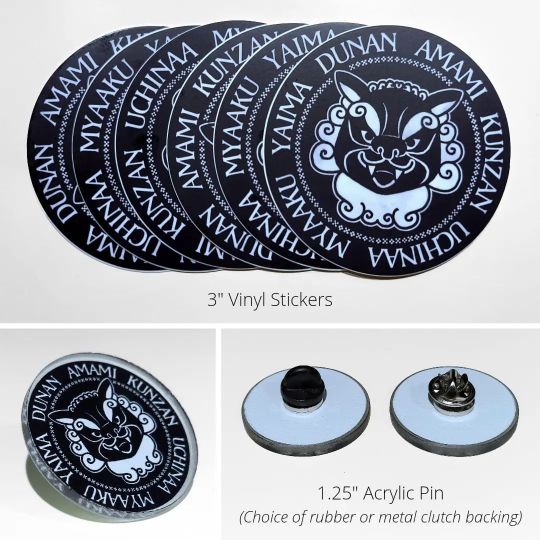
Haisai, gusuuyoo.
I hope everyone is safe and doing well.
I teamed up with Nami Oshiro, a fantastic Shimanchu American artist based in Virginia, to create the first three items in an ongoing effort to raise funds for independent Shimakutuba practitioners and projects.
Many Shimanchu creators and educators are doing the work on their own time and out of their own pockets, so I'm hoping that this (and future fundraisers) can be a small show of support and gratitude.
This 3" sticker, 2.25" button, and 1.25" acrylic pin set features a Ramones logo-inspired design with an open-mouth shiisaa symbolizing the sharing of good things, i.e. our indigenous languages. There are several distinct languages throughout the Ryūkyū Islands (all of which are endangered), so we decided to go with the six regions recognized by UNESCO: Amami, Kunjan (Kunigami), Uchinaa (Okinawa), Myaaku (Miyako), Yaima (Yaeyama), Dunan (Yonaguni).
Please visit the Ko‑fi shop today! All proceeds (minus item production costs and shipping fees) will be donated to individuals/groups and I'll post receipts once the donations are made.
P.S. I'm still selling items through the Shimanchu Dushi-nu-chaa Online Sale, if you're interested in combining shipping.
Shiisaa illustration by Nami Oshiro
- namioshiro.com
- inprnt.com/profile/namioshiro
- etsy.com/shop/iyasasa
- instagram.com/nami_oshiro
- twitter.com/namioshiro
#okinawa#okinawan#uchinaanchu#uchinanchu#shimanchu#ruuchuu#loochoo#ryukyu#ryukyuan#shiisaa#shisa#shimakutuba#uchinaaguchi#uchinaguchi#沖縄#ウチナーンチュ#琉球#島人#世界のウチナーンチュ#世界ウチナーンチュ#nami oshiro#art#artwork
27 notes
·
View notes
Text


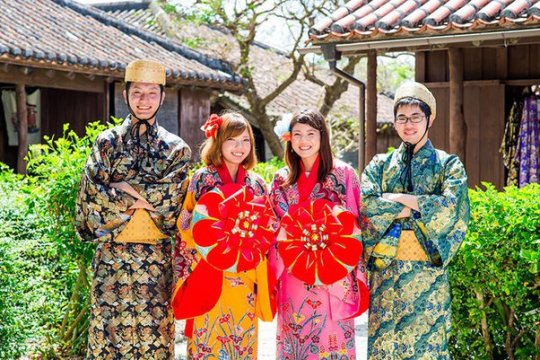
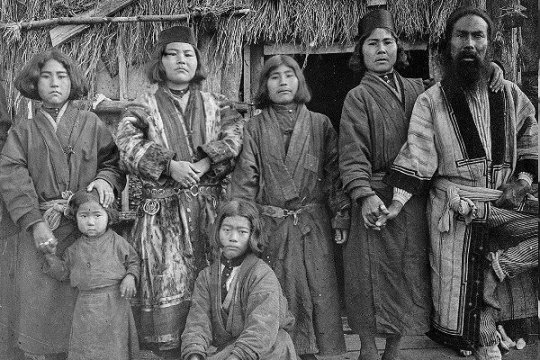

How many ethnicities are in Nipon(japan)?
Yamato Japanese 123,900,000
Ryukyuan Japanese1,300,000
Chinese 650,000
Korean 525,000
The Yamato people (大和民族, Yamato minzoku, literally "Yamato ethnicity") or the Wajin (和人, Wajin, 倭, literally "Wa people") is a term to describe the ethnic group that comprises over 98% of the population of Japan. Genetic and anthropometric studies has showed that the Yamato are an admixture of the migratory Kofun and Yayoi, who arrived from mainland East and Southeast Asia via the Korean Peninsula, as well as the indigenous Jōmon that were already living on the Japanese archipelago for thousands of years prior.
It can also refer to the first people that settled in Yamato Province (modern-day Nara Prefecture). Generations of Japanese historians, linguists, and archeologists have debated whether the word is related to the earlier Yamatai (邪馬臺). The Yamato clan set up Japan's first and only dynasty. The clan became the ruling faction in the area, and incorporated native Japanese, Chinese and Korean migrants. The clan leaders also elevated their own belief system that featured ancestor worship into a national religion known as Shinto.

The Ryukyuan people (Okinawan: 琉球民族 (るーちゅーみんずく), romanized: Ruuchuu minzuku or どぅーちゅーみんずく, Duuchuu minzuku, Japanese: 琉球民族/りゅうきゅうみんぞく, romanized: Ryūkyū minzoku, also Lewchewan or Loochooan)[8] are a Japonic-speaking East Asianethnic group native to the Ryukyu Islands, which stretch between the islands of Kyushu and Taiwan.[9] Administratively, they live in either the Okinawa Prefecture or the Kagoshima Prefecture within Japan. They speak one of the Ryukyuan languages, considered to be one of the two branches of the Japonic language family, the other being Japanese and its dialects. Hachijō is sometimes considered by linguists to constitute a third branch
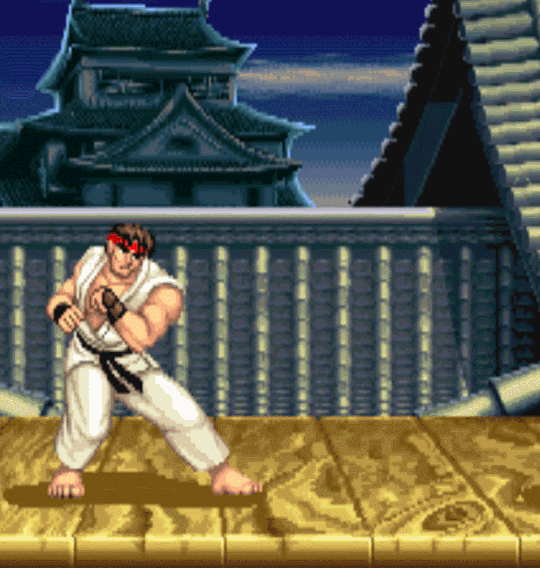
#ryukyuan#nippon#nipon#nihon#japan#kemetic dreams#yamato people#asian#east asian#east asians#ethnic diversity
7 notes
·
View notes
Text
Honestly looking at some of the conversations I'm seeing floated publically I'm increasingly cautiously optimistic that we may live to see a free Okinawa (or, rather, Uchinaa) and a free Ruuchuu, it seems like the Ruuchuu people are increasingly fed up with the governments neglect of them and exposure to American violence and disease-spreading. I really want to visit but I think I only want to visit once it's free
6 notes
·
View notes
Text
Zinnia Was Requested!
…and Because It’s Me, I meant to queue it for last Sunday but accidentally queued it for today.
My Response:
Random and/or Obscure Facts
Zinnia’s Japanese name is Higana (ヒガナ), which has several potenial meanings/origins. One meaning is ‘sorrowful memories’. According to Bulbapedia, the name comes from the Japanese word higanbana (彼岸花) which is a red spider lily and means "flower on the other shore". In Japanese culture, this plant is often associated with death/the afterlife.
She travels with a Whismur named Aster. In Japanese, that Whismur’s name is Shigana (シガナ), so it may be named after herself or someone very close to her. There is/was another Aster in her life, a character who is notably more complicated and hinted to be a human who is no longer in Zinnia’s life. This character plays a major role in the actions she takes in both the manga and game universes. According to an interview with Shigeru Ohmori—a prominent game designer at Game Freak—Aster was a person with special powers who held the position of Lorekeeper before Zinnia.
Zinnia is one of the few Draconid people (Japanese: 流星の民 Meteor people) who exist in the franchise. They are an ancient tribe of people who live in the Hoenn region.
She is the only character in the games to currently have the Trainer class ‘Lorekeeper’ (でんしょうしゃ). It is unclear if she is the only person to hold this title within every incarnation (games, animes, manga, and/or other canon resources).
Headcanons
The fictional Draconid people are parallel to the real-life Ryukyuan people (琉球民族),aka Ryūkyū minzoku/Ruuchuu minzuku/Duuchuu minzuku/Lewchewan/Loochooan. The Ryukyuan people are an ethnic group indigenous to the Japanese Ryukyu Islands.
Zinnia’s full name is Zinnia Higana—note that the ‘Higa’ surname is most common in western Japan and the Ryukyu Islands, and Higana is her canon Japanese name.
Zinnia has two large tattoos: a Salamence down the left side of her back and a red spider lily on her upper right arm
The mysterious ‘Aster’ (the human one) is Zinnia’s lover who is stuck in another dimension. I thank YouTube for inspiring this headcanon:)
I didn’t bother to make an icon for her since my other icons did not load on Tumblr. I made a gif instead:

Resources Consulted:
https://bulbapedia.bulbagarden.net/wiki/Zinnia
https://youtu.be/kKzvjRNmDlA
https://youtu.be/cibk1e_Wy94
Thank you for the ask:)
#ポケモン#pokemon trainers#pokémon masters#rayquaza#pokemon headcanons#lorekeeper zinnia#zinnia#my gifs#pokemon partners#pokémon duo#pokemon asks#pocket monsters#pokémon trainer#pokémon 2021#ポケットモンスター
6 notes
·
View notes
Text
On Japanese Loanwords in Okinawan
In my article on the different philosophies in learning Okinawan, I’ve touched up on the relatively low amount of Okinawan vocabulary and the language’s need for loanwords. I intend to get into more detail on this here. I was hoping for this article to be more structured, but it ended up being much more of a stream-of-consciousness venting of frustrations. And you know what? It’s a cluster of thoughts I think are worth sharing.
The Okinawan Language Dictionary is the preeminent and most definitive lexicon of the Okinawan language. The OLD lists 14,549 words in the Okinawan language. This is an incredibly low count, especially when you consider the (admittedly ranging) vocabulary count of other languages with English coming in with 350,000 words, the influential Chinese coming in at around 370,000 words, and Okinawan’s own relative Japanese ranging at around 500,000 words.
What this means is that to have even a basic conversation in Okinawan, you will need loanwords. The Okinawan language is without words that, while not so significant during Okinawa’s relative isolation from the rest of the world, are crucial to today’s society. Okinawan lacks words for the days of the week, any number larger than ten (up until one thousand), animals not native to Okinawa, most countries, inventions after, say, the 16th century, and, as far as I can tell, how to tell the exact time (if you look up the Japanese phrase “何時/nanji/What time?” in the Okinawan Language Dictionary, it redirects you to the Okinawan word “いち/ichi” which is the cognate with the much more vaguer Japanese word “いつ/itsu/When”). And so on.
And, obviously, that’s not to say modern Okinawans are unfamiliar with these concepts. Most (and, frankly, likely all) Okinawans speak the Japanese language natively, more so than the Okinawan language. Native Okinawan speakers still speak or at the very least can understand the Japanese language. There are so many concepts that they are used to doing in Japanese that can make conversation in pure Okinawan difficult if not impossible without switching to the Okinawan dialect of Japanese.
So, it’s only natural that when Okinawan doesn’t have a word, you loan the word you’re looking for from Japanese, even if that word is in and of itself loaned from another language like Chinese, English, or Portuguese. But then that raises the question of how do you loan a word from Japanese?
In European languages like English, words are loaned from other languages pretty much how they are. German terms used in the psychology field or French words in many more contexts come to mind. They can even be pronounced with their native German or French pronunciations though they often take on a form closer to the English pronunciation system. Anything is fine thanks to the versatility and wiggle room for interpretation in the alphabet.
East Asian languages tend to be different. When Chinese, Korean, or Japanese loans a word, these words must fit the stricter and often unique pronunciation systems and writing scripts of these languages. Korean uses a phonetic system that the loan word needs to fit into. Chinese breaks down the sounds of the loaned word and prescribes certain characters with similar sounds to it. Japanese has a whole writing script devoted to foreign loan words in the form of katakana but it still follows a phonetic system that the loan word must fit into. Things can get more complicated when the three mentioned languages loan words from each other in which the loaned word is less of a breakdown of the word’s native pronunciation to fit the loaning language’s system and more of a loaning language’s reading of the Chinese characters used to write the loaned word. The Chinese word for China is Zhongguo but the Japanese word for China isn’t ジョンググオ/jonguguo, but 中国/chuugoku as the characters for zhongguo are read that way in Japanese.
So relating that back to Okinawan, when Okinawan loans a word from Japanese, do we: A) Take the Japanese word and alter the phonetics to meet the Okinawan phonetic system OR B) Take the Japanese word as it is, complete with bringing over the Japanese phonetic system for that word.
I wish I had an answer for you. In fact, this very question has been one of the greatest hurdles in me learning Okinawan as the answer appears to be both.
Take the word 琉球 for example. It originated as a Chinese word, liuqiu. When the word was brought to Japanese, 琉球 had to match the Japanese phonetic system so it shifted into ryuukyuu. When the word was then brought from Japan to Okinawa, it had to meet the Okinawan phonetic system and so it was read as ruuchuu in Okinawan.
But meanwhile, we have the Japanese word 新型コロナウイルス/shingata korona uirusu, the term most often used to refer to the COVID-19 virus. 新型 literally means “new form.” While there is no equivalent for 新型 listed in the OLD, 型 is used in the Okinawan language and it can be read as gata in the same context as Japanese. 新, on the other hand, is a different story as it is never pronounced as shin in the OLD. Instead, 新 is given the reading of mii in the Okinawan language for the same context as when it is pronounced shin in Japanese. Could we loan the word 新型 into Okinawan? If so, would it be read as shingata or would it be read as miigata?
Well, the COVID-19 virus is, as you can imagine, a pretty big deal and is being spoken about in several Okinawan sources including the Hougen News broadcast as well as on blogs in the Okinawan language. The ゆんたく物語 blog calls it 新コロナウイルス/mii korona uirusu. This is interesting as it does not loan 新型. Rather, it simply uses the prefex version of “new”, 新 with the Okinawan reading. Instead of saying “the new form of coronavirus,” it’s saying “the new coronavirus” He was able to talk around the word that would have been loaned which is an important lesson to learn — You can avoid the loanword oddities if you talk around the word you need to loan.
However, the Hougen News Broadcast simply loans the term from Japanese, Japanese reading and all. Hougen News Broadcast says 新型コロナウイルス/shingata korona uirusu even in the context of the Okinawan language.
Can you hear my head blowing up in confusion?
To use another example from ゆんたく物語, the blog translates the Japanese phrase “同じ価値観/onaji kachikan/Same sense of values” into “同ぬ考え/I nu kangee/Same thinking.” Is having the same sense of values the same thing as having the same way of thinking? It is interesting that, despite Okinawan being so strongly related to Japanese, the amount of abstract thinking and vocabulary required to translate sentences is much higher than you would think.
Of course, unless you take the other approach of loanwords like how Hougen News used 新型コロナウイルス. Modern day Okinawan and Japanese share a special relationship where everyone who speaks Okinawan also speaks Japanese and Japanese is more comprehensive in nearly every scenario. The number of loanwords you can take from Japanese without even changing the pronunciation is impressive but then you get the question of how many loanwords can you use before you’re just talking Japanese with Okinawan grammar?
Meanwhile, we have the textbook 沖縄語の入門. Like I said before, there are no words for the day of the week listed in the OLD. However, 沖縄語の入門 loans the word “土曜日/doyoubi/Saturday” from Japanese and changes the reading of the characters to be duyuubi.

WHY? WHY? WHY? WHY?
沖縄語の入門 is pretty much the most reliable text for modern day Okinawan so I’m not keen on handwaving this away as a mistake. But it makes me wonder what the other days of the week are. Is it Getsuyuubi (or does the tsu change to a chi or a ti or something?), Kayuubi, Suiyuubi, Mukuyuubi, Kinyuubi, and Nichiyuubi or am I missing something?
Although, that being said, 沖縄語の入門 does use the wrong words for “11, 12, 13” and so on. It uses the Okinawan words “tuutiichu, tuutaachi, tuumiichi” and so on when they should be “juuichi, juuni, juusan”, etc. Multiple texts and native speakers corroborate that the counting system from 11 onwards (until 1,000) is identical to Japanese. Is duyuubi another one of these mistakes? Hougen News uses doyoubi from Japanese. I think. It can be really hard to tell the difference sometimes.
Things like this have been what’s been keeping me from updating this blog in a while as I’m having a hard time finding out when its appropriate to use a loanword and when it is not, as well as when the loanword keeps its Japanese pronunciation and when it receives and Okinawanization.
Desperate venting of confusion over.
13 notes
·
View notes
Photo
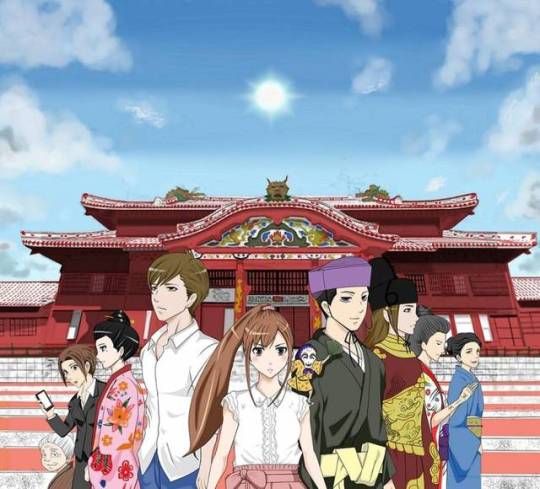
琉球王国を知っている?沖縄口でこの国は琉球國と呼ばれている。日本人と琉球人は別の文化と別の言語がある。でも、日本人は沖縄口が日本語の方言と思う。私は沖縄口と文化に興味があるので、このポストを作った。
琉球國アニメがまもなく発売されています。
絵はジャパンタイムズから来た。
琉球國 : ルーチュークク
沖縄口 : ウチナーグチ
私は練習中ですので、間違わたなら修正してください
Rough English Translation:
Have you heard of The Ryukyu Kingdom? In Okinawan this kingdom is called the Ruu-chuu kingdom. Japanese people and Ryukyu-an people have a separate culture and a separate language. But Japanese people think that Uchinaaguchi (Okinawan language) is merely a dialect of Japanese. I made this post because I am interested in Okinawan language and culture.
The Picture comes from The Japan Times.
I am practicing Japanese, so if I made a mistake please correct me.
#uchinaaguchi#japanese#japan#okinawa#shuri#language#nihongo#nihon#idioma#lengua#culture#anime#ryukyu#ruuchuu#japonic
0 notes
Photo

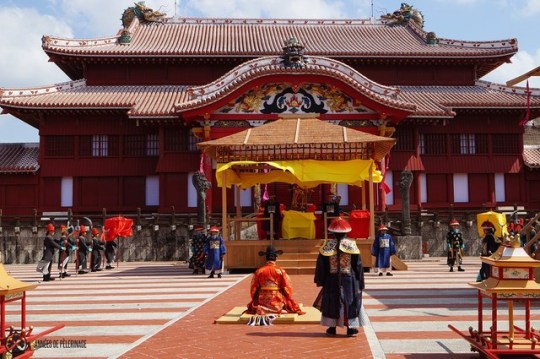

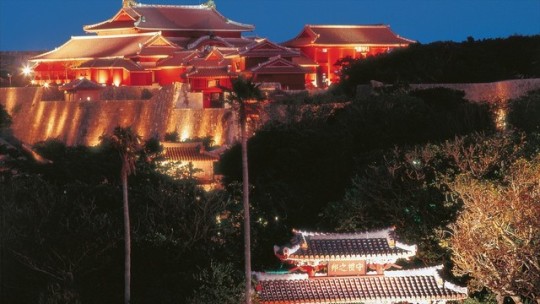
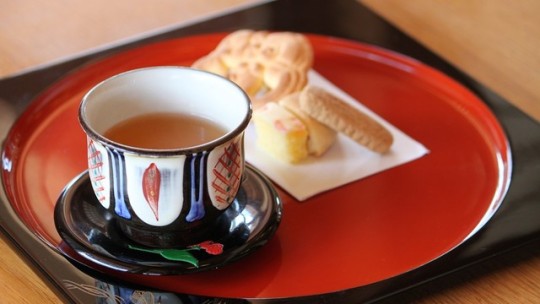
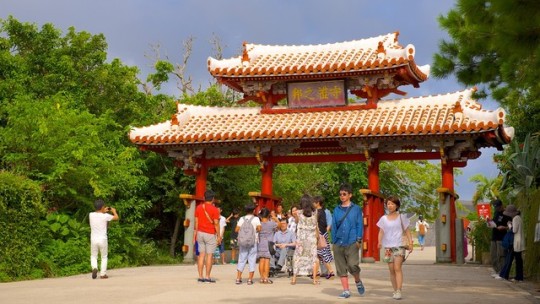
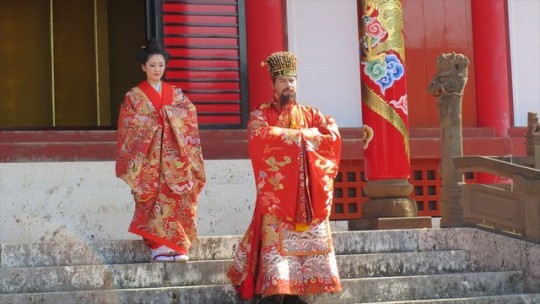



youtube
Vương quốc Lưu Cầu (tiếng Lưu Cầu: 琉球國 Ruuchuu-kuku, tiếng Nhật: 琉球王国 Ryūkyū Ōkoku, giản thể: 琉球国; phồn thể: 琉球國; bính âm: Liúqiú Guó; Hán-Việt: Lưu Cầu Quốc) là một vương quốc thống trị phần lớn quần đảo Ryukyu từ thế kỷ 15 đến thế kỷ 19. Các vua Lưu Cầu đã thống nhất đảo Okinawa và mở rộng lãnh địa vương quốc đến quần đảo Amami là một phần của tỉnh Kagoshima ngày nay, và quần đảo Yaeyama gần Đài Loan.
Vương quốc Lưu Cầu tồn tại trong các thế kỷ 15-19, được Trung Hoa hậu thuẫn nhờ có mối giao hảo với các triều Minh - Thanh. Năm 1609, lãnh chúa xứ Satsuma ở phía nam đảo Kyushu của Nhật Bản đã tấn công Lưu Cầu và buộc vương quốc này phải triều cống. Năm 1872, Nhật Bản tuyên bố Lưu Cầu là thuộc địa của mình, đặt tên là Okinawa - han. Đến năm 1879, Lưu Cầu bị sáp nhập hoàn toàn vào lãnh thổ Nhật, trở thành một tỉnh của đế chế mặt trời mọc. Ngày nay Okinawa là thánh địa của ngành du lịch Nhật Bản với một quần thể di tích thành quách, lâu đài, mộ cổ phong phú và một nền văn hóa mang đậm dấu ấn của biển.
https://www.expedia.co.jp/en/Shurijo-Castle-Ona.d6103854.Vacation-Attraction
http://langvietonline.vn/Du-Lich/117568/Tham-vuong-quoc-Luu-Cau-xua.html
1 note
·
View note